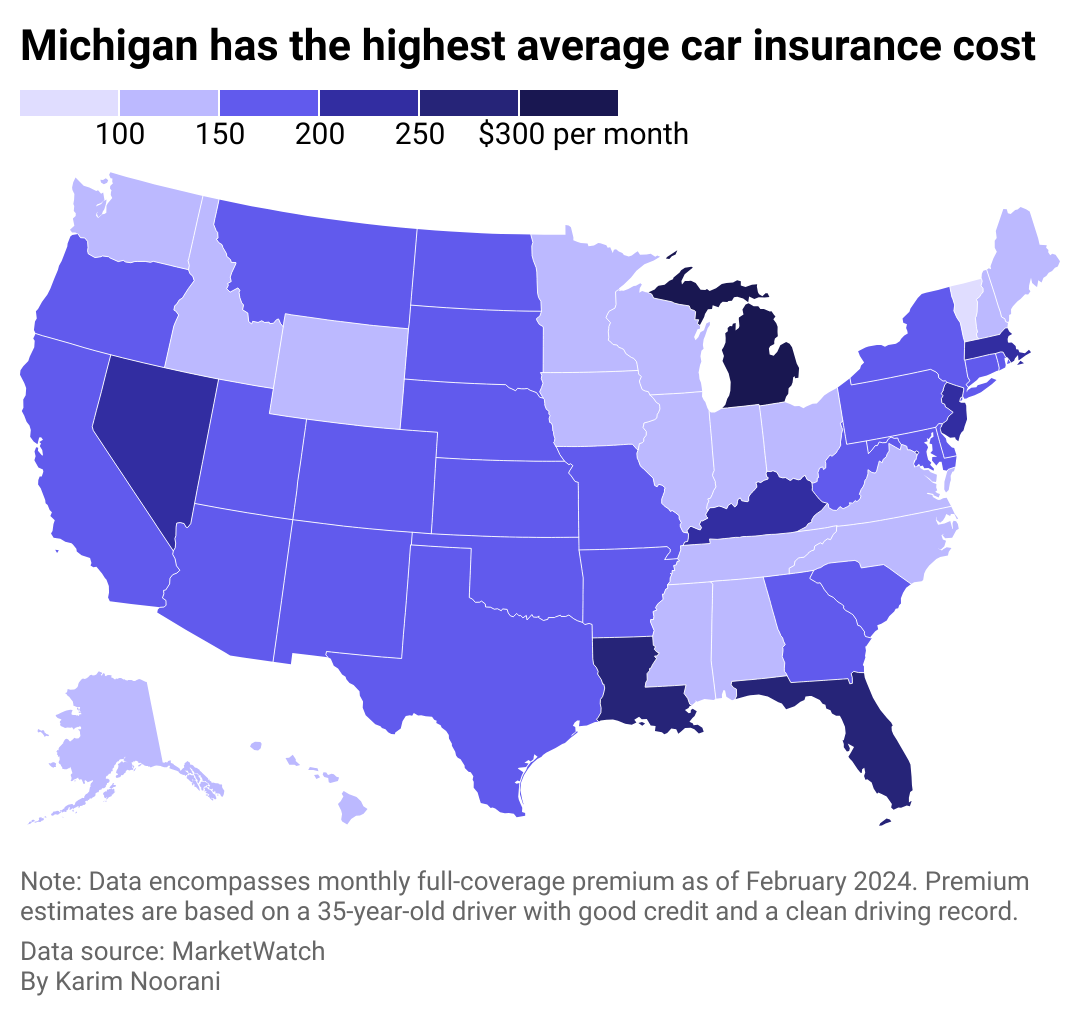Business
From accountants to loan officers: The 25 highest-paying business and finance occupations
Published
1 year agoon

From accountants to loan officers: 25 highest-paying business and finance occupations
Business and financial occupations—which concern the day-to-day duties of running a business or are related to raising or managing money— pay well. People in those positions made a median annual wage of $76,570 in May 2021, according to the Bureau of Labor Statistics reports. That far exceeds the BLS-measured median annual wage of $45,760 for all occupations.
Employment in these occupations is also expected to increase 7% through 2031, leading to about 715,100 new jobs over the decade that began in 2021. Besides newly created jobs, opportunities are created when workers leave the field, either from moving to new occupations or retirements. Those openings will total about 980,200 a year on average for the next decade.
Santa Clara University used the BLS Occupational Employment and Wage Statistics from May 2021 to find the 25 highest-paying business and financial occupations. The analysis ranks occupations by their median annual wage across all industries, including both the public and private sectors. It excluded occupations in “other” categories. (For example, “Business Operations Specialists, All Other.”) Standard errors ranging between 0.2% and 4% mean that the actual median wages could vary, creating probable overlap between many of the rankings.
Descriptions of jobs and information on educational backgrounds are also from the BLS website.
![]()

Halfpoint // Shutterstock
#25. Fundraisers
– Annual median wage: $60,660
– Employment: 82,080
As the title suggests, fundraisers are responsible for raising money and other types of donations through events and campaigns that they organize. The money might go to nonprofit organizations—including educational, religious, health research, or social services organizations—or contributions to a politician running for public office.
Typically a bachelor’s degree is required at the minimum, with a focus in communications, public relations, or business, and English proficiency is often preferred. The professional outlook is good, with employment in the fundraising field expected to grow 11% this decade, outpacing most other occupations.

Andrey_Popov // Shutterstock
#24. Property Appraisers and Assessors
– Annual median wage: $61,340
– Employment: 58,340
Property appraisers and assessors provide an estimate on the value of real estate—often necessary to obtain a mortgage, for example—and on personal and business property. They will likely have a bachelor’s degree but also extensive on-the-job training. Growth in the field through 2031 is projected at 4%, nearly as fast as the national average. There are expected to be about 6,800 openings each year over the decade, replacing those who leave the field or retire.

Rawpixel.com // Shutterstock
#23. Training and Development Specialists
– Annual median wage: $61,570
– Employment: 336,030
These specialists, who usually need a bachelor’s degree to enter the field, help employees improve their skills. They plan and administer programs to foster that advancement and work in nearly every industry. To be successful, they should have strong communication skills and on-the-job experience. The job outlook through 2031 projects an 8% growth rate.

djrandco // Shutterstock
#22. Human Resources Specialists
– Annual median wage: $62,290
– Employment: 740,830
Human resources specialists recruit, screen, and interview candidates for jobs, and may also handle pay and other compensation, as well as benefits, training, and employee relations. Those responsible for recruitment in particular may conduct video interviews via Zoom, but also travel to job fairs and college campuses. Typically, those in the field have a bachelor’s degree, often specializing in human resources or business. Employment in the HR specialist field is expected to grow by 8% through 2031.

ITisha // Shutterstock
#21. Auto Damage Insurance Appraisers
– Annual median wage: $62,680
– Employment: 11,430
Auto damage appraisers typically have experience estimating the cost of vehicle repairs or a certificate indicating postsecondary training in the field. They usually receive on-the-job training that can last several months, during which they are supervised by an experienced appraiser while estimating the cost of damages. Licensing requirements vary from state to state. The number of jobs for all claims adjusters and appraisers is expected to decline by 6% over the next decade.

Amnaj Khetsamtip // Shutterstock
#20. Loan Officers
– Annual median wage: $63,380
– Employment: 340,170
Employees in this field evaluate loan applications to either approve or reject them or recommend further underwriting. They typically have both a bachelor’s degree as well as on-the-job training. Most loan officers work for financial institutions, whether banks, credit unions, or mortgage companies. Mortgage loan officers also must undergo a criminal background check to be licensed.

GLRL // Shutterstock
#19. Buyers and Purchasing Agents
– Annual median wage: $63,470
– Employment: 439,020
These agents are responsible for buying products and services. Their work is overseen by purchasing managers. They usually have a bachelor’s degree, often in business, finance, or supply management, while managers also have work experience. Those expecting to work in agriculture might also consider a degree in agriculture production or animal science. The outlook for the field is not good for the next decade, as job prospects are expected to drop 6% through 2031.

Gorodenkoff // Shutterstock
#18. Market Research Analysts and Marketing Specialists
– Annual median wage: $63,920
– Employment: 727,540
Market research analysts try to determine the potential sales of products or services by studying such factors as business conditions and consumer preferences. Widely used throughout many industries, potential employees in this occupation must at least have a bachelor’s degree, although some employers require a master’s degree. Job prospects in the field are much better than average, with 19% growth in positions projected over the next 10 years. Marketing specialists develop campaigns to encourage brand awareness and promote sales, as well as organize trade shows, conferences, webinars, and similar events.

Akira Kaelyn // Shutterstock
#17. Compensation, Benefits, and Job Analysis Specialists
– Annual median wage: $64,120
– Employment: 87,750
These specialists handle wages and other benefits that companies or nonprofits provide for their employees. They may also determine salaries and job classifications. A bachelor’s degree is typically required. The outlook for future growth is projected to reach 7% through 2031.

Africa Studio // Shutterstock
#16. Claims Adjusters, Examiners, and Investigators
– Annual median wage: $65,080
– Employment: 278,140
Claims adjusters, examiners, and investigators are charged with evaluating insurance claims. Education or experience requirements vary, from a high school diploma to a bachelor’s degree to previous work experience in the insurance field. For investigators, some employers prefer to hire trained law enforcement officers or state-licensed private investigators. The overall employment of these specialists is expected to fall 6% through 2031, although there are about 23,200 openings every year.

Dragon Images // Shutterstock
#15. Cost Estimators
– Annual median wage: $65,170
– Employment: 208,950
Cost estimators determine how much it will cost to produce a product or provide a service. To do that, they collect and analyze data that allows them to assess the labor, materials, time, and money that would be needed. A bachelor’s degree is usually required, although experience in construction can be sufficient to start. Hiring in the field is expected to drop 2% over this decade, although there are some 18,500 openings each year to replace workers who have left or retired.

King Ropes Access // Shutterstock
#14. Compliance Officers
– Annual median wage: $71,650
– Employment: 334,340
This position requires a determination of whether companies or government offices and agencies are in compliance with legal regulations and other standards. The federal government hires the most compliance officers in the United States. The highest paid work can be found in mining industry compliance, with an annual mean wage of $111,640.

Africa Studio // Shutterstock
#13. Insurance Underwriters
– Annual median wage: $76,390
– Employment: 107,690
Insurance underwriters evaluate applications for insurance to decide whether to offer it and to determine the terms. Usually, a bachelor’s degree is required, although some positions may need only experience and competent computer skills while other more advanced roles—such as a senior underwriter or underwriter manager—could demand an industry certificate. The field has been in decline for years, with employment expected to fall 4% through 2031. However, there are about 8,400 openings each year to replace those who move to other careers or retire.

REDPIXEL.PL // Shutterstock
#12. Labor Relations Specialists
– Annual median wage: $77,010
– Employment: 63,810
Labor relations specialists focus on contracts, administering and interpreting contractual provisions. A bachelor’s degree in one of the following subjects is typically required: business, industrial relations, labor relations, or human resources. The need for labor relations specialists is expected to fall 3% over the next decade, but 5,800 replacements will be required for retiring union negotiators and others who move on from the field.

KPs Photography AND Film // Shutterstock
#11. Logisticians
– Annual median wage: $77,030
– Employment: 189,320
Logisticians have shined under the spotlight during the coronavirus pandemic, when disruptions upended supply chains around the world. That’s because logisticians are responsible for analyzing and coordinating supply chains. An often fast-paced and stressful job became even more difficult due to new government social distancing rules in food processing and consumer goods warehouses, as well as lockdowns in supplier countries such as China. The demand for logisticians is growing and is expected to expand by 28% through 2031.

Andrey_Popov // Shutterstock
#10. Accountants and Auditors
– Annual median wage: $77,250
– Employment: 1,318,550
Accountants and auditors handle financial records, preparing and examining them. They typically have a bachelor’s degree in accounting or similar subjects. Becoming a certified public accountant or CPA usually will improve job prospects. Employment in the field is expected to increase by 6% over the next 10 years.

Ground Picture // Shutterstock
#9. Credit Analysts
– Annual median wage: $77,440
– Employment: 68,770
Credit analysts examine financial statements and other data from individuals and companies to measure the risk of extending credit or lending money. They also prepare credit reports to be used in making loans. Credit analysts typically need a bachelor’s degree, and as of May 2021, there are more than 68,000 employed credit analysts.

Pressmaster // Shutterstock
#8. Agents and Business Managers of Artists, Performers, and Athletes
– Annual median wage: $78,410
– Employment: 12,480
Agents and business managers represent and promote their clients in their interactions with their current employers and also with prospective ones. They also might handle negotiations over contracts for actors, athletes, and entertainers. There are about 12,480 agents and business managers; however, the number does not include self-employed workers.
Most agents and business managers are located in or near the Los Angeles or New York City metro areas, where the cost of living is high.

fizkes // Shutterstock
#7. Budget Analysts
– Annual median wage: $79,940
– Employment: 47,440
Analysts in this field help plan the finances of public and private organizations. They usually need a bachelor’s degree and take courses in accounting, statistics, and economics. The growth outlook for the field is 3% through 2031, which is slower than average. However, about 4,000 jobs open up every year.

Andrey_Popov // Shutterstock
#6. Financial Examiners
– Annual median wage: $81,410
– Employment: 60,750
Financial examiners make sure that institutions handling monetary transactions adhere to all applicable laws. They typically work in the finance or insurance industries or for the federal or state governments. They usually need a bachelor’s degree with some classes in accounting and are trained on the job. The field is expected to grow 21% over the decade, much faster than the average job growth rate.

Canva
#5. Financial and Investment Analysts
– Annual median wage: $91,580
– Employment: 291,880
These analysts advise their clients, businesses, and individuals on how to invest their money to make a profit. More than 373,000 people, who ordinarily need a bachelor’s degree to do the job, are employed in this occupation. The field is projected to grow 9% through 2031, well above the national average rate of job growth.

DC Studio // Shutterstock
#4. Management Analysts
– Annual median wage: $93,000
– Employment: 768,450
Management analysts examine the workings of organizations to recommend ways they can improve efficiency and increase profitability. Those in the field usually have a bachelor’s degree and several years of relevant experience. The growth rate for the profession is expected to reach 11% through 2031, well above the average for all fields.

Canva
#3. Personal Financial Advisors
– Annual median wage: $94,170
– Employment: 263,030
Personal financial advisors help their clients to manage money and plan for their retirement, children’s education, purchasing a home, and other life goals. Advisors typically need a bachelor’s degree, but a master’s degree and some industry certification, such as the Certified Financial Planner, can be helpful to advance an advisor’s career. As the population ages and Gen Xers and millennials inherit wealth from boomer parents passing on, the field is on pace to grow faster than the average throughout the economy, by 15% over the next decade.

NicoElNino // Shutterstock
#2. Project Management Specialists
– Annual median wage: $94,500
– Employment: 743,860
Project management specialists oversee projects, from coordinating the budget to managing scheduling and handling staffing. Project managers usually have a bachelor’s degree, with an emphasis on business, project management, or a similar field, while industry certifications can be helpful for advancement. The field is positioned to expand by 7% through 2031, which is about the national average for all occupations.

fizkes // Shutterstock
#1. Financial Risk Specialists
– Annual median wage: $100,000
– Employment: 54,320
These specialists analyze and measure the credit or market risks that could affect the economic health of an organization, including its assets and earnings capacity. Financial risk specialists can recommend ways to limit risk and often work for the Federal Reserve, in the securities and commodities industries, or for insurance carriers.
This story originally appeared on Santa Clara University and was produced and
distributed in partnership with Stacker Studio.
Founded in 2017, Stacker combines data analysis with rich editorial context, drawing on authoritative sources and subject matter experts to drive storytelling.
You may like
Business
Import costs in these industries are keeping prices high
Published
1 week agoon
April 11, 2024
Inflation has cooled substantially, but Americans are still feeling the strain of sky-high prices. Consumers have to spend more on the same products, from the grocery store to the gas pump, than ever before.
Increased import costs are part of the problem. The U.S. is the largest goods importer in the world, bringing in $3.2 trillion in 2022. Import costs rose dramatically in 2021 and 2022 due to shipping constraints, world events, and other supply chain interruptions and cost pressures. At the June 2022 peak, import costs for all commodities were up 18.6% compared to January 2020.
While import costs have since fallen most months—helping to lower inflation—they remain nearly 12% above what they were in 2020. And beginning in 2024, import costs began to rise again, with January seeing the highest one-month increase since March 2022.
Machinery Partner used Bureau of Labor Statistics data to identify the soaring import costs that have translated to higher costs for Americans. Imports in a few industries have had an outsized impact, helping drive some of the overall spikes. Crop production, primary metal manufacturing, petroleum and coal product manufacturing, and oil and gas extraction were the worst offenders, with costs for each industry remaining at least 20% above 2020.
![]()

Machinery Partner
Imports related to crops, oil, and metals are keeping costs up
At the mid-2022 peak, import costs related to oil, gas, petroleum, and coal products had the highest increases, doubling their pre-pandemic costs. Oil prices went up globally as leaders anticipated supply disruptions from the conflict in Ukraine. The U.S. and other allied countries put limits on Russian revenues from oil sales through a price cap of oil, gas, and coal from the country, which was enacted in 2022.
This activity around the world’s second-largest oil producer pushed prices up throughout the market and intensified fluctuations in crude oil prices. Previously, the U.S. had imported hundreds of thousands of oil barrels from Russia per day, making the country a leading source of U.S. oil. In turn, the ban affected costs in the U.S. beyond what occurred in the global economy.
Americans felt this at the pump—with gasoline prices surging 60% for consumers year-over-year in June 2022 and remaining elevated to this day—but also throughout the economy, as the entire supply chain has dealt with higher gas, oil, and coal prices.
Some of the pressure from petroleum and oil has shifted to new industries: crop production and primary metal manufacturing. In each of these sectors, import costs in January were up about 40% from 2020.
Primary metal manufacturing experienced record import price growth in 2021, which continued into early 2022. The subsequent monthly and yearly drops have not been substantial enough to bring costs down to pre-COVID levels. Bureau of Labor Statistics reporting shows that increasing alumina and aluminum production prices had the most significant influence on primary metal import prices. Aluminum is widely used in consumer products, from cars and parts to canned beverages, which in turn inflated rapidly.
Aluminum was in short supply in early 2022 after high energy costs—i.e., gas—led to production cuts in Europe, driving aluminum prices to a 13-year high. The U.S. also imposes tariffs on aluminum imports, which were implemented in 2018 to cut down on overcapacity and promote U.S. aluminum production. Suppliers, including Canada, Mexico, and European Union countries, have exemptions, but the tax still adds cost to imports.
U.S. agricultural imports have expanded in recent decades, with most products coming from Canada, Mexico, the EU, and South America. Common agricultural imports include fruits and vegetables—especially those that are tropical or out-of-season—as well as nuts, coffee, spices, and beverages. Turmoil with Russia was again a large contributor to cost increases in agricultural trade, alongside extreme weather events and disruptions in the supply chain. Americans felt these price hikes directly at the grocery store.
The U.S. imports significantly more than it exports, and added costs to those imports are felt far beyond its ports. If import prices continue to rise, overall inflation would likely follow, pushing already high prices even further for American consumers.
Story editing by Shannon Luders-Manuel. Copy editing by Kristen Wegrzyn.
This story originally appeared on Machinery Partner and was produced and
distributed in partnership with Stacker Studio.
Founded in 2017, Stacker combines data analysis with rich editorial context, drawing on authoritative sources and subject matter experts to drive storytelling.
Business
The states where people pay the most in car insurance premiums
Published
2 weeks agoon
April 4, 2024
Nearly every state requires drivers to carry car insurance, but the laws vary, and many factors affect the cost of coverage.
Some are controllable, at least to degrees: the type of car you have and your credit history. Some are not: your age and gender. Your marital status, place of residence, and claims history are among the other variables that go into it.
Across the United States, premiums are soaring, rising 20% year over year and increasing six times faster than consumer prices overall as of December 2023, CBS reported. Last September, CNN noted that car insurance rates jumped more in the previous year than they had since 1976.
CBS pointed to many potential reasons for these increases in prices. Coronavirus pandemic-era issues have made buying, fixing, and replacing vehicles costlier. Extreme weather events caused by climate change also damage more vehicles, while insurance companies are increasing their business costs. Severe and more frequent crashes are to blame as well, CNN reported.
On top of these, local factors such as population density, the number of uninsured drivers, and the frequency of insurance claims all affect premiums, which can lead motorists to change or switch their coverage, use other modes of transportation, or even alter decisions about when to buy a vehicle or what to look for.
To see how geography affects cost, Cheap Insurance mapped the states where people pay the most in car insurance premiums using MarketWatch data. Premium estimates were based on full-coverage car insurance for a 35-year-old driver with good credit and a clean driving record. Data accurate as of February 2024.
![]()

Cheap Insurance
Americans pay $167 per month on average for full-coverage insurance
There are common denominators among the five states where it’s most expensive to have car insurance: Michigan, Florida, Louisiana, Nevada, and Kentucky. Washington D.C. is another pricey locale, ranking #4 overall.
Three of these six are no-fault jurisdictions and require additional coverage beyond coverage to pay for medical costs. Michigan notably calls for $250,000 in personal injury protection (though people with Medicaid and Medicare may qualify for lower limits), $1 million in personal property insurance for damage done by your car in Michigan, and residual bodily injury and property damage liability that starts at $250,000 for a person harmed in an accident.
Other commonalities between these states include high urban population densities. At least 9 in 10 people in Nevada, Florida, and Washington D.C. live in cities and urban areas, which leads to more crashes and thefts and high rates of uninsured drivers and lawsuits. Additionally, Louisiana, Florida, and Kentucky rank #5, #8, and #10, respectively, in motor vehicle crash deaths per 100 million vehicle miles traveled in 2021 based on Department of Transportation data analyzed by the Insurance Institute for Highway Safety.

Canva
#5. Kentucky
– Monthly full-coverage insurance: $210
– Monthly liability insurance: $57

Canva
#4. Nevada
– Monthly full-coverage insurance: $232
– Monthly liability insurance: $107

Canva
#3. Louisiana
– Monthly full-coverage insurance: $253
– Monthly liability insurance: $77

Canva
#2. Florida
– Monthly full-coverage insurance: $270
– Monthly liability insurance: $115

Canva
#1. Michigan
– Monthly full-coverage insurance: $304
– Monthly liability insurance: $113
Story editing by Carren Jao. Copy editing by Paris Close. Photo selection by Lacy Kerrick.
This story originally appeared on Cheap Insurance and was produced and
distributed in partnership with Stacker Studio.
Founded in 2017, Stacker combines data analysis with rich editorial context, drawing on authoritative sources and subject matter experts to drive storytelling.
Business
How businesses can protect themselves from the rising threat of deepfakes
Dive into the world of deepfakes and explore the risks, strategies and insights to fortify your organization’s defences
Published
1 month agoon
March 11, 2024By
Dave Gordon
In Billy Joel’s latest video for the just-released song Turn the Lights Back On, it features him in several deepfakes, singing the tune as himself, but decades younger. The technology has advanced to the extent that it’s difficult to distinguish between that of a fake 30-year-old Joel, and the real 75-year-old today.
This is where tech is being used for good. But when it’s used with bad intent, it can spell disaster. In mid-February, a report showed a clerk at a Hong Kong multinational who was hoodwinked by a deepfake impersonating senior executives in a video, resulting in a $35 million theft.
Deepfake technology, a form of artificial intelligence (AI), is capable of creating highly realistic fake videos, images, or audio recordings. In just a few years, these digital manipulations have become so sophisticated that they can convincingly depict people saying or doing things that they never actually did. In little time, the tech will become readily available to the layperson, who’ll require few programming skills.
Legislators are taking note
In the US, the Federal Trade Commission proposed a ban on those who impersonate others using deepfakes — the greatest concern being how it can be used to fool consumers. The Feb. 16 ban further noted that an increasing number of complaints have been filed from “impersonation-based fraud.”
A Financial Post article outlined that Ontario’s information and privacy commissioner, Patricia Kosseim, says she feels “a sense of urgency” to act on artificial intelligence as the technology improves. “Malicious actors have found ways to synthetically mimic executive’s voices down to their exact tone and accent, duping employees into thinking their boss is asking them to transfer funds to a perpetrator’s account,” the report said. Ontario’s Trustworthy Artificial Intelligence Framework, for which she consults, aims to set guides on the public sector use of AI.
In a recent Microsoft blog, the company stated their plan is to work with the tech industry and government to foster a safer digital ecosystem and tackle the challenges posed by AI abuse collectively. The company also said it’s already taking preventative steps, such as “ongoing red team analysis, preemptive classifiers, the blocking of abusive prompts, automated testing, and rapid bans of users who abuse the system” as well as using watermarks and metadata.
That prevention will also include enhancing public understanding of the risks associated with deepfakes and how to distinguish between legitimate and manipulated content.
Cybercriminals are also using deepfakes to apply for remote jobs. The scam starts by posting fake job listings to collect information from the candidates, then uses deepfake video technology during remote interviews to steal data or unleash ransomware. More than 16,000 people reported that they were victims of this scam to the FBI in 2020. In the US, this kind of fraud has resulted in a loss of more than $3 billion USD. Where possible, they recommend job interviews should be in person to avoid these threats.
Catching fakes in the workplace
There are detector programs, but they’re not flawless.
When engineers at the Canadian company Dessa first tested a deepfake detector that was built using Google’s synthetic videos, they found it failed more than 40% of the time. The Seattle Times noted that the problem in question was eventually fixed, and it comes down to the fact that “a detector is only as good as the data used to train it.” But, because the tech is advancing so rapidly, detection will require constant reinvention.
There are other detection services, often tracing blood flow in the face, or errant eye movements, but these might lose steam once the hackers figure out what sends up red flags.
“As deepfake technology becomes more widespread and accessible, it will become increasingly difficult to trust the authenticity of digital content,” noted Javed Khan, owner of Ontario-based marketing firm EMpression. He said a focus of the business is to monitor upcoming trends in tech and share the ideas in a simple way to entrepreneurs and small business owners.
To preempt deepfake problems in the workplace, he recommended regular training sessions for employees. A good starting point, he said, would be to test them on MIT’s eight ways the layperson can try to discern a deepfake on their own, ranging from unusual blinking, smooth skin, and lighting.
Businesses should proactively communicate through newsletters, social media posts, industry forums, and workshops, about the risks associated with deepfake manipulation, he told DX Journal, to “stay updated on emerging threats and best practices.”
To keep ahead of any possible attacks, he said companies should establish protocols for “responding swiftly” to potential deepfake attacks, including issuing public statements or corrective actions.
How can a deepfake attack impact business?
The potential to malign a company’s reputation with a single deepfake should not be underestimated.
“Deepfakes could be racist. It could be sexist. It doesn’t matter — by the time it gets known that it’s fake, the damage could be already done. And this is the problem,” said Alan Smithson, co-founder of Mississauga-based MetaVRse and investor at Your Director AI.
“Building a brand is hard, and then it can be destroyed in a second,” Smithson told DX Journal. “The technology is getting so good, so cheap, so fast, that the power of this is in everybody’s hands now.”
One of the possible solutions is for businesses to have a code word when communicating over video as a way to determine who’s real and who’s not. But Smithson cautioned that the word shouldn’t be shared around cell phones or computers because “we don’t know what devices are listening to us.”
He said governments and companies will need to employ blockchain or watermarks to identify fraudulent messages. “Otherwise, this is gonna get crazy,” he added, noting that Sora — the new AI text to video program — is “mind-blowingly good” and in another two years could be “indistinguishable from anything we create as humans.”
“Maybe the governments will step in and punish them harshly enough that it will just be so unreasonable to use these technologies for bad,” he continued. And yet, he lamented that many foreign actors in enemy countries would not be deterred by one country’s law. It’s one downside he said will always be a sticking point.
It would appear that for now, two defence mechanisms are the saving grace to the growing threat posed by deepfakes: legal and regulatory responses, and continuous vigilance and adaptation to mitigate risks. The question remains, however, whether safety will keep up with the speed of innovation.
Dave is a journalist whose work has appeared in more than 100 media outlets around the world, including BBC, National Post, Washington Times, Globe and Mail, New York Times, Baltimore Sun.
Featured
-

 Business4 months ago
Business4 months agomesh conference goes deep on AI, with experts focusing in on training, ethics, and risk
-

 Business4 months ago
Business4 months agoSkill-based hiring is the answer to labour shortages, BCG report finds
-

 Events6 months ago
Events6 months agoTop 5 tech and digital transformation events to wrap up 2023
-

 People4 months ago
People4 months agoHow connected technologies trim rework and boost worker safety in hands-on industries
-

 Events3 months ago
Events3 months agoThe Northern Lights Technology & Innovation Forum comes to Calgary next month

